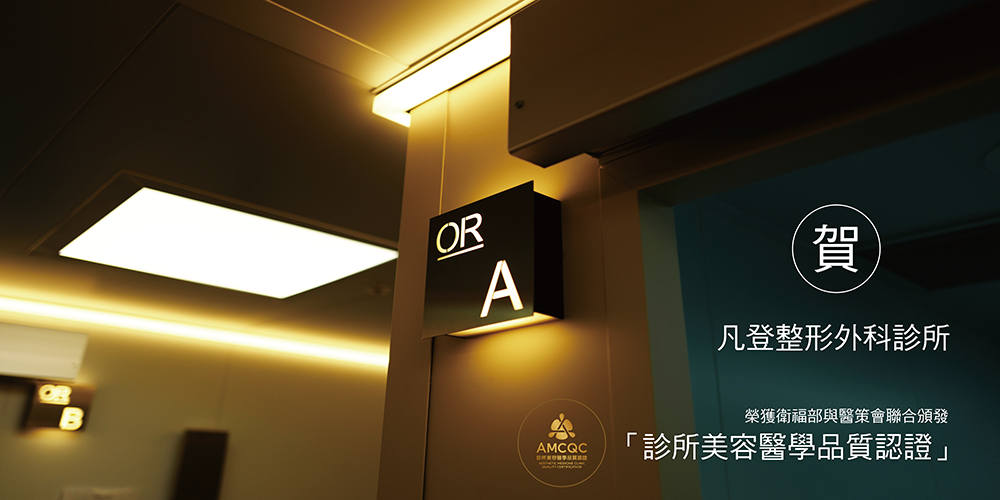Fat Grafting Breasts Augmentation
Fat grafting breast augmentation. Individual results may vary.
Fat grafting breast augmentation. Individual results may vary.
Fat grafting breast augmentation. Individual results may vary.
Advances in fat grafting and liposuction techniques have allowed fat grafting in becoming a safe and effective options for breast augmentation. Fat grafting breast augmentation is a procedure utilizing patient’s own fat to increase the volume of the breasts. In prior to the procedure, it is necessary to obtain a detailed understanding of physiological condition of the patient and the histological characteristics of autologous fat.
Unlike traditional breast augmentation, this natural form of breast enlargement and enhancement requires delicate surgical techqniues and is usually limited to 1-1.5 cup (250-300cc of purified fat) for optimal fat viability. Therefore, fat grafting breast augmentation is most-suited for women with at least a B cup and those who are considering a secondary breast augmentation.

Fat grafting breasts augmentation incorporates three simultaneous procedure. First, extract the fat via liposuction from the areas of excess fat such as thighs and abdomen. Second, purify the extracted fat using Mela purification system. Third, reinject the fact to desired body parts.
Autologous Fat:liquid gold
 In the field of medicine, autologous fat is frequently referenced as the “liquid gold” due to following characteristics:
In the field of medicine, autologous fat is frequently referenced as the “liquid gold” due to following characteristics:
|Large volume and easy to obtain
|Natural-looking results
|High viability
|No allergic or rejection
With the advancement of liposuction techniques, fat grafting has been broadly used in aesthetic plastic surgeries. Although fat are required to be extracted surgically, capsular contracture and fat resorption does not occur in fat grafting procedures.
Common Donor Sites for Fat Grafting Breast Augmentation

Common donor sites for fat grafting:
|Abdomen
|Lower back
|Buttocks
|Thigh (including the saddlebags)
Consultations with a board-certified plastic surgeon is recommended in order to evaluate your candidacy for fat grafting.
Patients often wish to utilize upper arms as the donor site for a more defined arm contour, however, upper arm may not be ideal due to 5-10% of reduced fat viability and skin laxity. Therefore, thighs, abdomen, and buttocks are usually the best donor sites for fat grafting procedures.
Pre-Operative 3D Simulation for Fat Grafting Breast Augmentation

Pre-operative assessments for fat grafting breasts augmentation includes:
|BMI Assessment
|Body Fat Assessment
|3D Simulation
|Breasts Ultrasound and MRI Scan
In addition to obtaining the anatomic contour and overall health of the patients’ breasts, MRI scan allows the plastic surgeons to determine the breasts’ histological characteristics and to accuracy calculate the fat volume required for breast augmentation in order to effectively prevent post-surgical edema and calcification.

Liposuction for Fat Grafting Breast Augmentation

|VASER liposuction effectively emulsifies the adipocytes to minimize bleeding and damages of surrounding tissues, nerves, and blood vessels.
|VASER liposuction effectively removes fat in the subdermal layer and prevents the formation of post-surgical lumps and bumps.
|VASER liposuction reserves the integrity of adipocytes, which increases the viability in fat transfer procedures such as fat grafting breasts augmentation and enhancement.
Autologous Fat Purification for Fat Grafting Breast Augmentation
In prior to fat grafting breast augmentation and enhancement, fat extracted from the donor cites undergoes purification to eliminate the unwanted contents of residual blood cells, tumescent fluid, free lipids, and tissues.
.jpg)
Mela Purification System for Fat Grafting Breast Augmentation
Vendome Aesthetic Medical Center uses the Mela purification system to effectively remove crude fat impurities. Developed and patented in the United States, Mela purification system utilizes a double-membrane lipodialysis technology to purified up to 99% of the crude fat and to effectively prevent the damage of of the adipose tissue integrity. Purified fat promotes excellent surgical outcome by significantly increase viability of the fat grafts.


Cautions in Fat Grafting Breast Augmentation

To prevent infections, fat injections should be avoided at the mammary glands as the mammary glands are a type of apocrine glands connected to the surface of the breasts and has higher chances of infections.
To prevent breasts calcifications and minimize mammographic disturbance, it is necessary to limit the volume of fat injected at the same area to 1-2 cc. It is crucial to select a well-trained plastic surgeon in order to ensure breast health during and after the surgery.
Before and After(A Cup)
.jpg)
Fat grafting breast augmentation. Individual results may vary.
.jpg)
Fat grafting breast augmentation. Individual results may vary.
.jpg)
Fat grafting breast augmentation. Individual results may vary.
.jpg)
Fat grafting breast augmentation. Individual results may vary.
.jpg)
Fat grafting breast augmentation. Individual results may vary.
.jpg)
Fat grafting breast augmentation. Individual results may vary.
Before and After(B Cup)
.jpg)
Fat grafting breast augmentation. Individual results may vary.
.jpg)
Fat grafting breast augmentation. Individual results may vary.
.jpg)
Fat grafting breast augmentation. Individual results may vary.
Before and After(C Cup)
.jpg)
Fat grafting breast augmentation. Individual results may vary.
.jpg)
Fat grafting breast augmentation. Individual results may vary.
.jpg)
Fat grafting breast augmentation. Individual results may vary.
Before and After(Postpartum A Cup)
.jpg)
Fat grafting breast augmentation. Individual results may vary.
.jpg)
Fat grafting breast augmentation. Individual results may vary.
.jpg)
Fat grafting breast augmentation. Individual results may vary.
.jpg)
Fat grafting breast augmentation. Individual results may vary.
.jpg)
Fat grafting breast augmentation. Individual results may vary.
Before and After(Postpartum B Cup)
.jpg)
Fat grafting breast augmentation. Individual results may vary.
.jpg)
Fat grafting breast augmentation. Individual results may vary.
.jpg)
Fat grafting breast augmentation. Individual results may vary.
.jpg)
Fat grafting breast augmentation. Individual results may vary.
.jpg)
Fat grafting breast augmentation. Individual results may vary.
.jpg)
Fat grafting breast augmentation. Individual results may vary.
Before and After(Postpartum C Cup)
.jpg)
Fat grafting breast augmentation. Individual results may vary.
.jpg)
Fat grafting breast augmentation. Individual results may vary.
.jpg)
Fat grafting breast augmentation. Individual results may vary.
.jpg)
Fat grafting breast augmentation. Individual results may vary.
.jpg)
Fat grafting breast augmentation. Individual results may vary.
Before and After Sagging breasts
.jpg)
Fat grafting breast augmentation. Individual results may vary.
.jpg)
Fat grafting breast augmentation. Individual results may vary.
.jpg)
Fat grafting breast augmentation. Individual results may vary.
.jpg)
Fat grafting breast augmentation. Individual results may vary.
.jpg)
Fat grafting breast augmentation. Individual results may vary.
.jpg)
Fat grafting breast augmentation. Individual results may vary.
.jpg)
Fat grafting breast augmentation. Individual results may vary.
.jpg)
Fat grafting breast augmentation. Individual results may vary.
.jpg)
Fat grafting breast augmentation. Individual results may vary.
.jpg)
Fat grafting breast augmentation. Individual results may vary.
Potential Complications for Fat Grafting Breasts Augmentation
Fat grafting breast augmentation and enhancement is a frequently inquired procedure with high post-operative satisfaction. However, like any other surgical procedures, unpredictable risks and complications do occur.
|Harmless oil cysts which require routine MRI screening
|Harmless micro-calcification
|Cysts, bleeding, and local infection (extremely rare)
|Dents and lumps after liposuction (rarely occur if performed by a board-certified plastic surgeon)
|Autologous fat absorption (Average fat graft retention is 50-70%)
If you are considering fat grafting breast augmentation or enhancement, please make sure to find an accredited plastic surgery clinic and a qualified plastic surgeon to customized your procedure based on your health condition and needs. In addition, routine checkups are also required to minimize post-operative complications.
Fat Grafting Breasts Augmentation Video
Frequently Asked Questions for Fat Grafting Breasts Augmentation
Q:What is the viability of fat graft? Does the size decrease over time? Answer
Fat viability is the most frequently discussed issue in fat grafting breast augmentation. Depending on the characteristics of the patient, 50-70% of fat graft is able to retained after 3-6 months with sufficient blood supply.
To promote the retention of the fat grafts, a good post-operative care including wearing loose-fitting bras, maintaining a balanced diet, avoid sauna and massages to the breasts are essential.
Q:Can I increase my cup size from an A to a D with fat grafting breast augmentation? Answer
Although fat grafting breast augmentation effectively increase cup sizes, it is recommended to limit the volume of fat transfer in each procedure. To ensure complete adipocyte adhesion and viability, it is suggested to limit the increase to 1-1.5 cup size per session.
If you would like to go from an A to a D cup, fat refill in separate sessions may be required. However, due to the variance in patient characteristics, a thorough consultation with a board-certified plastic surgeon is ideal.
Q:Am I too thin for a fat grafting procedure? Answer
As fat grafting require a sufficient amount of fat retrieval, we recommend those who wish to undergo the procedure have a thorough evaluation with a plastic surgeon. The procedure is suited for candidates below:
|Flat chested
|Unsatisfied with the size and shape of the breasts
|Breasts with moderate sagging and skin laxity
|Postpartum breasts shrinkage
|Asymmetrical breasts
|Breasts shrinkage from over-dieting
Q:Does micro-calcification occur after the procedure? Answer
Micro-calcification and oil cysts are inevitable with large volume of fat injections. The process of fat purification and a skilled plastic surgeon are crucial to minimize the formation of micro-calcification and oil cysts.
To date, numerous studies and clinical reports have established an protocol for optimal surgical outcome. That is, to limit the injection of purified fat at the subcutaneous layer of the pectoralis major muscle, its surrounding while avoiding the mammary glands.
In addition, routine post-operative checkups are also extremely important to reduce such complications.






